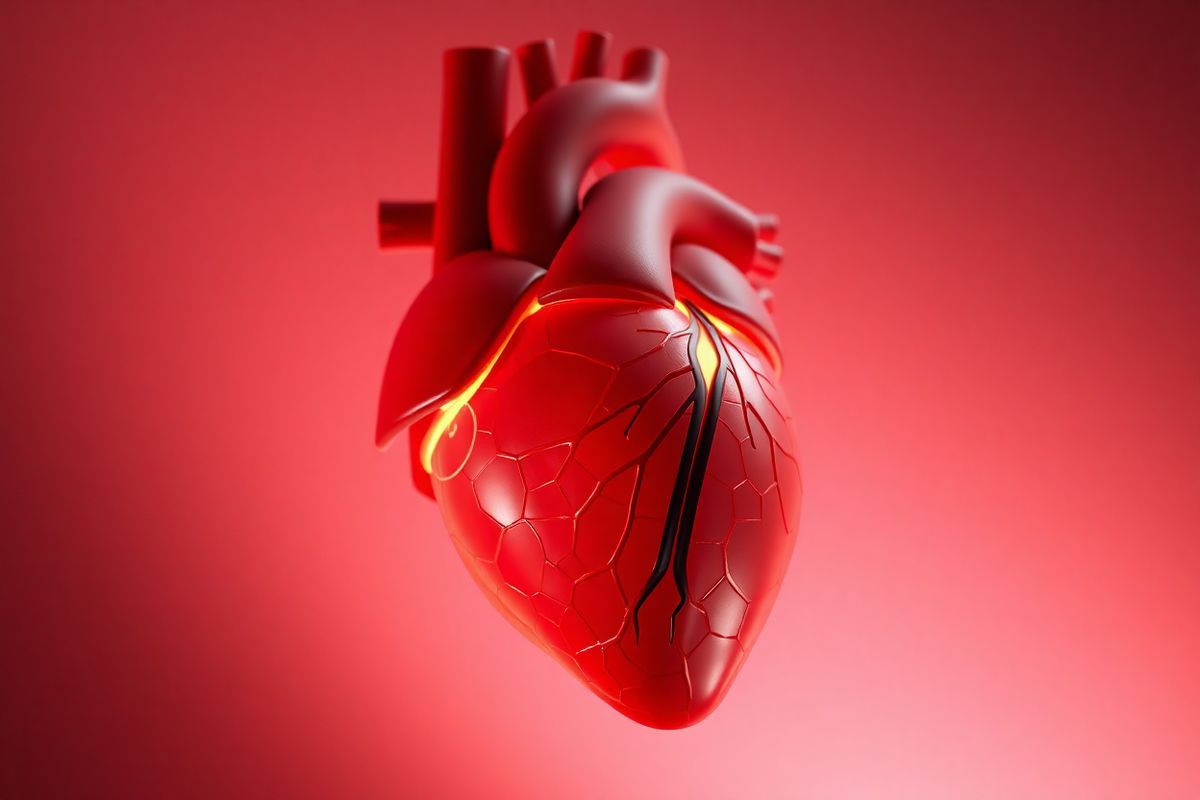Table of Contents
What is Junctional Escape Rhythm? An In-Depth Overview

A junctional escape rhythm is a type of cardiac arrhythmia that arises when the heart’s primary pacemaker, the sinoatrial (SA) node, fails to initiate or maintain a normal heartbeat. Instead, the heart relies on backup pacemakers located near the atrioventricular (AV) node or within the His-Purkinje system, which can generate impulses to keep the heart beating, albeit at a reduced rate. The typical heart rate in junctional escape rhythm ranges from 40 to 60 beats per minute (bpm), a significant reduction from the normal sinus rhythm of 60 to 100 bpm (Cleveland Clinic, n.d.).
This rhythm can manifest in various forms, including junctional bradycardia (less than 40 bpm), junctional escape rhythm (40 to 60 bpm), accelerated junctional rhythm (60 to 100 bpm), and junctional tachycardia (over 100 bpm) (NHS, 2024). Junctional escape rhythm serves as a protective mechanism when the SA node is compromised, allowing the heart to maintain a level of function despite underlying issues.
Mechanism of Junctional Escape Rhythm
The heart’s electrical system is responsible for coordinating its rhythmic contractions. Under normal circumstances, electrical impulses are generated by the SA node, spreading through the atria and reaching the AV node, where a slight delay allows the ventricles to fill with blood before contracting. In cases of junctional escape rhythm, the SA node fails to trigger a heartbeat, prompting the AV node or surrounding tissues to generate impulses, typically resulting in a slower heart rate (Yale Medicine, n.d.). This phenomenon can occur due to various factors, including increased vagal tone, which is often seen in athletes, or pathological conditions affecting the heart’s conduction system.
Recognizing the Symptoms: How to Identify Junctional Escape Rhythm

Patients with junctional escape rhythm may experience a variety of symptoms, although some individuals may remain asymptomatic. Common symptoms include:
- Palpitations: A sensation of fluttering or irregular heartbeats.
- Dizziness or lightheadedness: Resulting from reduced cardiac output.
- Fatigue: Due to decreased efficiency in blood circulation.
- Shortness of breath: Especially during physical exertion.
- Chest discomfort or pain: Sometimes indicative of underlying heart issues.
- Fainting or near-fainting spells: Particularly if the heart rate drops significantly.
These symptoms arise because the heart may not pump sufficient blood to meet the body’s needs, particularly during physical activity or stress (Marshfield Clinic, n.d.).
Exploring the Causes: What Triggers Junctional Escape Rhythm?
Several factors can lead to the development of a junctional escape rhythm, including:
- Sinus Node Dysfunction: Conditions like sick sinus syndrome, where the SA node fails to discharge impulses properly, are common causes.
- High Vagal Tone: Often seen in athletes, this can suppress SA node activity, allowing junctional rhythms to emerge.
- Medications: Certain drugs, such as beta-blockers and calcium-channel blockers, can alter heart rhythm.
- Electrolyte Imbalances: Abnormal levels of potassium or calcium can affect heart rhythm.
- Ischemic Heart Disease: Reduced blood flow to the heart muscle can impair electrical activity.
- Structural Heart Disease: Conditions such as cardiomyopathy can disrupt the normal conduction pathway.
Junctional escape rhythms can also be observed during acute medical situations where the heart’s normal rhythm is impaired, such as after myocardial infarction or during severe hypoxia (Marshfield Clinic, n.d.).
Diagnosing Junctional Escape Rhythm: Tests and Procedures Explained
Diagnosis of junctional escape rhythm typically involves a combination of medical history, physical examination, and diagnostic tests. Key evaluations include:
-
Electrocardiogram (EKG): This test is crucial in diagnosing junctional escape rhythm. It reveals a regular ventricular rhythm at a rate of 40 to 60 bpm, often with absent or inverted P waves due to the atria being activated retrogradely or simultaneously with the ventricles (Cleveland Clinic, n.d.; Litfl, n.d.).
-
Echocardiogram: An ultrasound of the heart to assess its overall function and structure, helping to identify any underlying heart disease.
-
Holter Monitor: A portable device worn over 24 to 48 hours to continuously monitor heart rhythms and identify intermittent arrhythmias.
-
Event Monitor: Similar to a Holter monitor but used for longer periods, recording only when activated by the patient during symptoms.
-
Electrophysiology Study (EPS): An invasive test that examines the electrical activity of the heart to pinpoint abnormal pathways or rhythms.
These tests help confirm the diagnosis and assess any underlying conditions that may necessitate treatment.
Treatment Options for Junctional Escape Rhythm: Managing Heart Arrhythmia Effectively
The management of junctional escape rhythm largely depends on the underlying cause, presence of symptoms, and overall cardiac health. Treatment options include:
-
Observation: In asymptomatic patients or those with mild symptoms, observation may be sufficient, as many cases of junctional escape rhythm are benign.
-
Medications: If symptoms are present, medications such as atropine may be administered to increase heart rate by blocking vagal tone effects.
-
Pacemaker Implantation: In cases where junctional escape rhythm is linked to significant bradycardia or symptomatic heart block, implantation of a permanent pacemaker may be indicated to regulate heart rhythm (Cleveland Clinic, n.d.).
-
Management of Underlying Conditions: Addressing any contributing factors, such as electrolyte imbalances or discontinuing problematic medications, is essential in managing junctional rhythms.
Table: Summary of Treatment Options for Junctional Escape Rhythm
| Treatment Option | Description |
|---|---|
| Observation | Monitoring without immediate intervention, suitable for asymptomatic patients. |
| Medications | Use of atropine or other agents to increase heart rate and alleviate symptoms. |
| Pacemaker Implantation | Surgical procedure to implant a device that regulates heart rhythm in symptomatic patients. |
| Management of Underlying Conditions | Treating factors like electrolyte imbalances or adjusting medications to restore normal rhythm. |
FAQ Section
Q: What is a junctional escape rhythm?
A: A junctional escape rhythm occurs when the SA node fails to initiate a heartbeat, and the heart relies on backup pacemakers, typically at the AV node, resulting in a heart rate of 40 to 60 bpm.
Q: What causes junctional escape rhythm?
A: Causes can include sinus node dysfunction, high vagal tone, certain medications, electrolyte imbalances, and structural heart conditions.
Q: How is junctional escape rhythm diagnosed?
A: It is diagnosed through an EKG, which shows a regular rhythm with possible absent or inverted P waves, alongside other tests such as echocardiograms and Holter monitors.
Q: What treatment options are available for junctional escape rhythm?
A: Treatment may involve observation, medications like atropine, or pacemaker implantation, depending on symptoms and underlying causes.
Q: Can junctional escape rhythm be life-threatening?
A: While often not life-threatening, it can lead to complications if associated with significant bradycardia or underlying heart disease.
References
- Cleveland Clinic. (n.d.). Junctional Rhythm: Causes, Symptoms and Treatment. Retrieved from https://my.clevelandclinic.org/health/diseases/23206-junctional-rhythm
- NHS. (2024). Heart rhythm problems (arrhythmia). Retrieved from https://www.nhs.uk/conditions/arrhythmia/
- Marshfield Clinic. (n.d.). Heart Arrhythmia: Causes, symptoms, treatment. Retrieved from https://www.marshfieldclinic.org/specialties/heart-care/arrhythmia
- Litfl. (n.d.). Junctional Escape Rhythm. Retrieved from https://litfl.com/junctional-escape-rhythm-ecg-library/
- Yale Medicine. (n.d.). Heart Arrhythmia. Retrieved from https://www.yalemedicine.org/conditions/heart-arrhythmia









